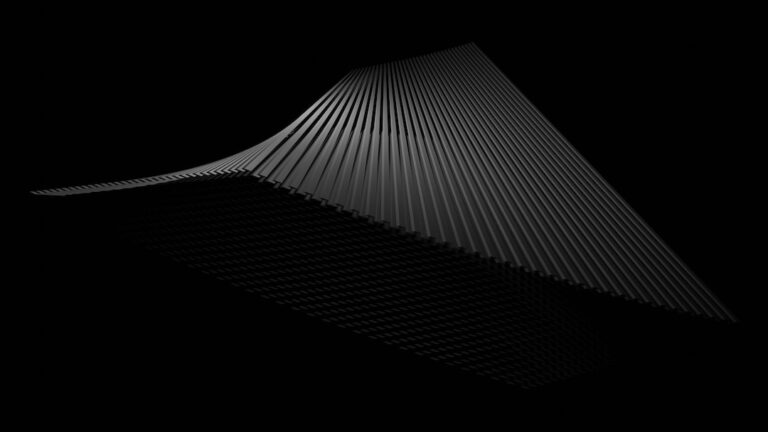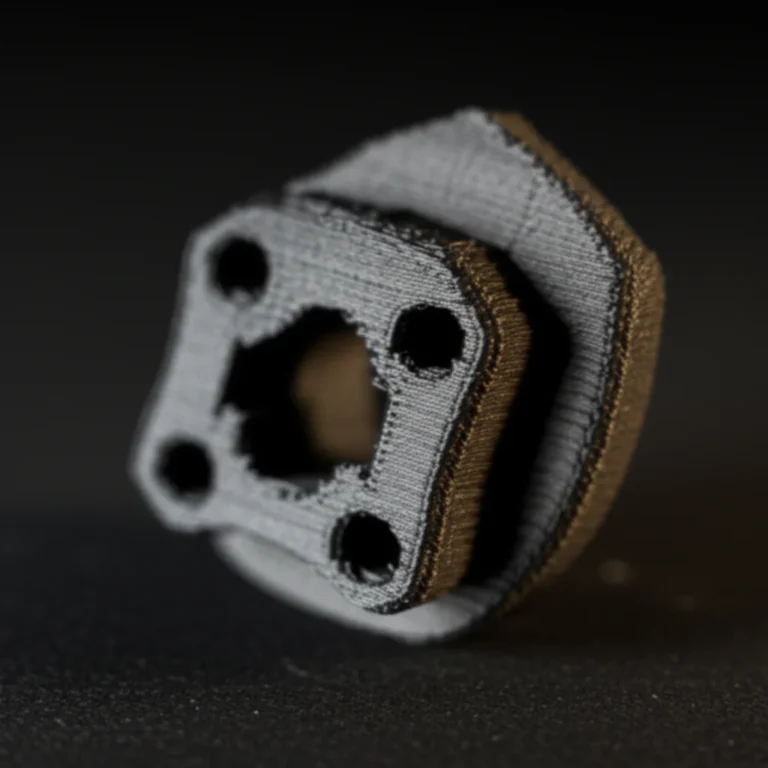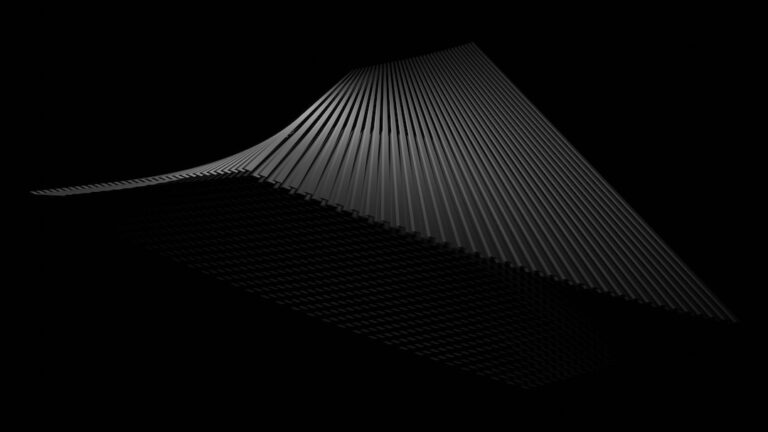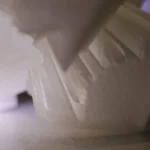Support our educational content for free when you purchase through links on our site. Learn more
What Products Can Be 3D Printed? 40+ Amazing Items in 2025 🚀
Imagine printing a custom sneaker one day, a lifesaving prosthetic the next, and even parts of a bridge—all from a digital file. Sounds like sci-fi? Welcome to the world of 3D printing in 2025, where the boundaries of manufacturing are being rewritten layer by layer. From everyday household gadgets to aerospace-grade engine components, the range of products you can 3D print is staggering—and growing every day.
Did you know that General Electric now prints critical jet engine parts that are lighter and stronger than traditionally made ones? Or that architects are using desktop 3D printers to prototype massive infrastructure projects like the Tons Bridge? In this comprehensive guide, we’ll explore over 40 incredible products you can 3D print, backed by insights from our expert engineers at 3D Printed™. Plus, we’ll reveal some unexpected uses and future trends that will keep you ahead of the curve.
Key Takeaways
- 3D printing spans countless industries, from consumer goods and fashion to aerospace and medical devices.
- Customization and rapid prototyping are among the biggest advantages, enabling unique, functional, and complex designs.
- Materials range widely, including plastics, metals, resins, and composites, each suited for different applications.
- Notable examples include Nike’s 3D printed cleats, GE’s jet engine nozzles, and personalized prosthetics from Open Bionics.
- Future trends like multi-material printing and bioprinting promise even more groundbreaking products.
Ready to explore or start printing? Check out these top product categories and brands to find 3D printable models and gear:
- Nike Vapor HyperAgility Cleats: Thingiverse | Nike Official
- Jewelry Replicator by American Pearl: American Pearl
- Volvo Construction Equipment Prototypes: Volvo CE
- General Electric Jet Engine Parts: GE Aviation
- 3D Printable Models for Everyday Use: Thingiverse | MyMiniFactory
Dive in and discover what you can create with 3D printing today!
Table of Contents
- ⚡️ Quick Tips and Facts About 3D Printed Products
- 🔍 The Evolution and Impact of 3D Printing in Product Manufacturing
- 1️⃣ Everyday Consumer Goods You Can 3D Print at Home
- 2️⃣ Cutting-Edge Automotive and Aerospace Components Made with 3D Printing
- 3️⃣ Fashion and Jewelry: The Artistry of 3D Printed Wearables
- 4️⃣ Architectural Marvels and Engineering Feats Using 3D Printing
- 5️⃣ Medical and Dental Applications: Personalized Healthcare Solutions
- 6️⃣ Industrial and Manufacturing Uses: From Prototyping to End-Use Parts
- 🌟 The Future of Products Made with 3D Printing: Trends and Innovations
- 📚 Expand Your Manufacturing Knowledge: Resources and Learning Paths
- 💬 Write a Comment: Share Your 3D Printing Creations and Questions
- 🔚 Conclusion: What Can You Really 3D Print?
- 🔗 Recommended Links for 3D Printing Enthusiasts
- ❓ FAQ: Answering Your Burning Questions About 3D Printed Products
- 📑 Reference Links and Further Reading
⚡️ Quick Tips and Facts About 3D Printed Products
Welcome to the ultimate guide on what products can be 3D printed — brought to you by the passionate engineers and enthusiasts at 3D Printed™! If you’ve ever wondered whether your favorite gadget, shoe, or even a bridge could be conjured layer by layer from plastic, resin, or metal, you’re in the right place. Before we dive into the juicy details, here are some quick facts and tips to get you started:
| Aspect | Quick Insight |
|---|---|
| Speed | 3D printing can reduce prototyping time from weeks to days or even hours. |
| Customization | Perfect for one-off, personalized, or complex designs impossible with traditional manufacturing. |
| Material Variety | From PLA and ABS plastics to titanium and ceramics — the options are vast and growing. |
| Cost Efficiency | Lowers tooling and production costs, especially for small batches and prototypes. |
| Industries Impacted | Aerospace, automotive, medical, fashion, architecture, and even food! |
| Limitations | Size constraints, surface finish, and strength can vary depending on the printer and material. |
Pro Tip: If you’re new to 3D printing, check out our related article What is 3D Printed? 2025 Guide 🚀 for a solid foundation on the technology and terminology.
Wondering what’s the coolest thing you can 3D print? Stick around — we’ll reveal some jaw-dropping examples that might just blow your mind!
🔍 The Evolution and Impact of 3D Printing in Product Manufacturing
3D printing, also known as additive manufacturing, has evolved from a niche prototyping tool into a game-changing technology that’s reshaping how products are designed and made. From humble beginnings in the 1980s with stereolithography (SLA), today’s printers can create everything from custom prosthetics to jet engine parts.
The Revolution in Manufacturing
- Rapid Prototyping: Designers can iterate dozens of times in days, not months.
- Complex Geometries: Shapes that were impossible or prohibitively expensive to make with traditional methods are now routine.
- On-Demand Production: No more massive inventories — parts can be printed as needed.
- Sustainability: Less waste compared to subtractive manufacturing.
Industry Adoption Highlights
- Aerospace: Lightweight, high-strength parts for aircraft and rockets.
- Medical: Patient-specific implants and surgical guides.
- Fashion: Customized footwear and jewelry.
- Construction: Entire buildings and infrastructure prototypes.
This evolution is not just a tech upgrade — it’s a paradigm shift that’s democratizing manufacturing and unleashing creativity worldwide.
1️⃣ Everyday Consumer Goods You Can 3D Print at Home
Let’s get practical! What can you print with a desktop 3D printer? Plenty, actually. Here’s a breakdown of popular, useful, and fun items you can create right from your living room.
Rating Table: Everyday Consumer Goods
| Product Category | Design (1-10) | Functionality (1-10) | Ease of Printing (1-10) | Practicality (1-10) |
|---|---|---|---|---|
| Kitchenware & Utensils | 7 | 8 | 9 | 8 |
| Custom Phone Cases | 9 | 7 | 8 | 7 |
| Toys & Educational Models | 8 | 7 | 9 | 8 |
Kitchenware and Utensils
What you can print: Measuring spoons, cookie cutters, spice racks, and even custom coffee stencils.
- Materials: Food-safe PLA or PETG are recommended.
- Benefits: Customize sizes and shapes to fit your kitchen style.
- Drawbacks: Surface finish may require post-processing for hygiene and durability.
Our Experience: We printed a set of measuring spoons with a food-safe filament from Proto-pasta, and after curing, they held up well in daily use. Just remember to avoid high heat!
Custom Phone Cases and Accessories
Why print your own? Personalization! You can design cases with your favorite patterns, logos, or even functional add-ons like cardholders.
- Design Tips: Use flexible filaments like TPU for shock absorption.
- Popular Models: Search for “phone case” on Thingiverse for thousands of free designs.
Our Take: Printing a TPU case for our phones was a fun weekend project. The fit was snug, and the flexibility prevented cracks. However, printing TPU requires some printer tuning.
Toys and Educational Models
From chess pieces to anatomical models, 3D printing opens up a world of educational fun.
- Materials: PLA is perfect for safe, colorful prints.
- Learning Boost: Teachers and parents can print custom puzzles and models to enhance STEM learning.
Fun Fact: The “50+ Useful 3D Prints For Beginners You Should Try” video by Williams Workshop (#featured-video) is a treasure trove of ideas for newbies!
2️⃣ Cutting-Edge Automotive and Aerospace Components Made with 3D Printing
3D printing isn’t just for trinkets — it’s powering high-performance parts in some of the most demanding industries.
Rating Table: Automotive & Aerospace Components
| Product | Design Complexity (1-10) | Material Strength (1-10) | Production Speed (1-10) | Cost Efficiency (1-10) |
|---|---|---|---|---|
| General Electric Jet Engine Parts | 10 | 10 | 9 | 8 |
| Volvo Construction Equipment Prototypes | 9 | 9 | 10 | 9 |
General Electric’s Jet Engine Parts
Why 3D print jet engine components? GE uses additive manufacturing to create parts like fuel nozzles that are lighter, stronger, and have complex internal geometries impossible to machine traditionally.
- Benefits: Reduced weight improves fuel efficiency; fewer parts mean less assembly.
- Challenges: Requires advanced metal printers and rigorous testing.
Quote from GE: “3D printing allowed us to test, iterate, and create shapes not possible with traditional manufacturing, pushing innovation faster.” (source)
Volvo’s Construction Equipment Prototypes
Volvo slashed prototyping costs and time by using 3D printing for engine and equipment parts.
- Results: Tooling costs dropped by 90%, and prototyping time dropped from 20 weeks to 2 weeks.
- Impact: Faster product development cycles and more design flexibility.
Our Insight: This is a stellar example of how 3D printing accelerates industrial innovation, making it accessible even for large-scale heavy machinery.
3️⃣ Fashion and Jewelry: The Artistry of 3D Printed Wearables
3D printing is revolutionizing personal style with custom footwear and intricate jewelry.
Rating Table: Fashion & Jewelry
| Product | Design Freedom (1-10) | Material Variety (1-10) | Wearability (1-10) | Customization (1-10) |
|---|---|---|---|---|
| Jewelry Replicator by American Pearl | 10 | 8 | 9 | 10 |
| Nike Vapor HyperAgility Cleat | 9 | 7 | 9 | 8 |
Jewelry Replicator by American Pearl
American Pearl’s Jewelry Replicator service lets customers turn photos or sketches into stunning 3D printed jewelry.
- Features: Enables recreation of lost or unique pieces.
- Materials: Precious metals via casting from 3D printed molds.
- Benefits: More creative control and reduced costs compared to traditional handcrafting.
User Review: “I had a family heirloom recreated perfectly — the detail was amazing!” — Sarah M.
Customizable Footwear Like Nike Vapor HyperAgility Cleats
Nike uses 3D printing to prototype and produce cleats optimized for performance.
- Advantages: Faster design iterations, improved grip, and lighter weight.
- Materials: Durable polymers and flexible materials.
- Limitations: Mass production still relies on traditional methods for cost reasons.
Fun Fact: Nike’s 3D printed cleats helped athletes improve lateral acceleration by minimizing turf slippage (source).
4️⃣ Architectural Marvels and Engineering Feats Using 3D Printing
From bridges to building prototypes, 3D printing is shaping the skylines of tomorrow.
Rating Table: Architecture & Engineering
| Project | Scale (1-10) | Precision (1-10) | Material Innovation (1-10) | Impact (1-10) |
|---|---|---|---|---|
| Tons Bridge by YLE Engineers | 9 | 8 | 7 | 9 |
| Innovative Building Materials & Techniques | 8 | 9 | 9 | 8 |
Tons Bridge by YLE Engineers
This 2000-ton, 125-meter-long bridge prototype was developed using desktop ZMorph 3D printers for design validation.
- Process: Multiple iterations of scale models tested for durability and design.
- Benefits: Reduced risk and cost before full-scale construction.
- Innovation: Demonstrates how desktop 3D printers can contribute to large infrastructure projects.
Innovative Building Materials and Techniques
3D printing in construction includes onsite printing of concrete structures and modular components.
- Materials: Concrete mixes, composites, and recycled materials.
- Advantages: Faster builds, less waste, and design freedom.
- Challenges: Regulatory hurdles and scale limitations.
Example: MX3D’s stainless steel bridge in Amsterdam showcases metal 3D printing at architectural scale.
5️⃣ Medical and Dental Applications: Personalized Healthcare Solutions
3D printing is a lifesaver — literally — in medicine and dentistry.
Rating Table: Medical & Dental Products
| Product | Custom Fit (1-10) | Biocompatibility (1-10) | Production Speed (1-10) | Cost Savings (1-10) |
|---|---|---|---|---|
| Prosthetics and Orthotics | 10 | 9 | 8 | 9 |
| Dental Implants and Surgical Guides | 10 | 10 | 9 | 8 |
Prosthetics and Orthotics
3D printing enables custom-fit prosthetics that are lightweight, affordable, and tailored to individual needs.
- Materials: Nylon, TPU, and biocompatible resins.
- Benefits: Faster turnaround and improved comfort.
- Drawbacks: Limited durability compared to traditional prosthetics in some cases.
Personal Story: One of our engineers helped print a prosthetic hand for a child using Open Bionics designs — the joy on the kid’s face was priceless!
Dental Implants and Surgical Guides
Dental labs use 3D printing for crowns, aligners, and surgical guides with unmatched precision.
- Process: Scan → Design → Print → Post-process.
- Benefits: Reduced patient visits and improved outcomes.
- Popular Brands: SmileDirectClub uses 3D printing for clear aligners (source).
6️⃣ Industrial and Manufacturing Uses: From Prototyping to End-Use Parts
3D printing is a powerhouse for industrial innovation, from rapid prototyping to producing final parts.
Rating Table: Industrial & Manufacturing Applications
| Use Case | Speed (1-10) | Cost Efficiency (1-10) | Customization (1-10) | Durability (1-10) |
|---|---|---|---|---|
| Rapid Prototyping | 10 | 9 | 10 | 7 |
| Small Batch & Custom Manufacturing | 9 | 8 | 10 | 8 |
Rapid Prototyping Benefits
- Faster Iterations: Designers can test and refine concepts quickly.
- Lower Costs: No need for expensive molds or tooling.
- Flexibility: Easily switch between designs without downtime.
Example: Volvo’s prototyping success story is a prime example of these benefits in action.
Small Batch and Custom Manufacturing
3D printing excels at producing limited runs or customized parts without the overhead of mass production.
- Industries: Aerospace, automotive, consumer electronics.
- Advantages: Reduced inventory and waste.
- Limitations: Not always cost-effective for large volumes.
🌟 The Future of Products Made with 3D Printing: Trends and Innovations
What’s next in the world of 3D printed products? Here’s what our experts at 3D Printed™ are excited about:
- Multi-material Printing: Combining flexible, rigid, and conductive materials in one print.
- Bioprinting: Printing tissues and organs for transplantation.
- Metal Printing Advances: Faster, cheaper, and more accessible metal additive manufacturing.
- Sustainability: Using recycled materials and reducing carbon footprints.
- Mass Customization: Personalized products becoming the norm, not the exception.
The future is bright, and the possibilities are nearly limitless. Curious about how these trends might affect your next project? Keep an eye on our 3D Printing Innovations section for the latest updates!
📚 Expand Your Manufacturing Knowledge: Resources and Learning Paths
Ready to dive deeper? Here are some top resources to boost your 3D printing know-how:
- Online Communities: Reddit r/3Dprinting and 3D Hubs Talk
- Model Repositories: Thingiverse, MyMiniFactory, Cults3D
- Design Software: Blender, Fusion 360, Tinkercad — check out our 3D Design Software guides.
- Courses: Coursera’s “3D Printing Applications” and LinkedIn Learning’s “Additive Manufacturing Fundamentals.”
- Books: “Fabricated: The New World of 3D Printing” by Hod Lipson & Melba Kurman.
Tip: Start small, experiment often, and don’t be afraid to fail — that’s how innovation happens!
💬 Write a Comment: Share Your 3D Printing Creations and Questions
We love hearing from our community! Have you printed something amazing? Got a tricky problem or a question about materials, settings, or design? Drop a comment below or join the conversation on our social channels.
Sharing your story could inspire others and help us all grow together in this exciting 3D printing journey.
🔚 Conclusion: What Can You Really 3D Print?
So, what can you really 3D print? The short answer: almost anything — from everyday household items to cutting-edge aerospace components, personalized medical devices, and even architectural marvels. Our journey through consumer goods, industrial applications, fashion, and healthcare has shown that 3D printing is no longer just a prototyping tool but a full-fledged manufacturing revolution.
Recap of Key Takeaways
- Consumer Goods: Practical, customizable, and fun items like kitchenware, phone cases, and educational toys are perfect for home 3D printers.
- Industrial & Aerospace: Complex, high-strength parts like General Electric’s jet engine components and Volvo’s construction prototypes highlight 3D printing’s industrial muscle.
- Fashion & Jewelry: Services like American Pearl’s Jewelry Replicator and Nike’s cleats demonstrate the creative and performance potential.
- Architecture & Engineering: From the Tons Bridge prototype to innovative building materials, 3D printing is reshaping infrastructure.
- Medical & Dental: Personalized prosthetics, implants, and surgical guides are improving patient outcomes.
- Future Trends: Multi-material printing, bioprinting, and sustainability are set to push the boundaries even further.
Closing the Curiosity Loop
Remember when we teased the coolest things you can print? Well, it’s not just about novelty — it’s about empowering creativity, speeding innovation, and making manufacturing accessible to everyone. Whether you’re printing a custom phone case or a jet engine nozzle, 3D printing is transforming ideas into reality faster and more affordably than ever before.
Our confident recommendation: Dive in! Explore, experiment, and embrace 3D printing as a tool to unlock your creative and professional potential. And if you want to stay ahead, keep an eye on emerging materials and technologies — the future is layered, literally.
🔗 Recommended Links for 3D Printing Enthusiasts
Ready to start printing or expand your collection? Here are some top picks and resources:
-
Nike Vapor HyperAgility Cleat:
Thingiverse Search: Nike Vapor HyperAgility Cleat | Nike Official Website -
General Electric Jet Engine Parts (Prototypes & Concepts):
GE Aviation Official Site -
Volvo Construction Equipment Prototypes:
Volvo CE Official Website -
Jewelry Replicator by American Pearl:
American Pearl Jewelry Replicator -
Tons Bridge Prototype by YLE Engineers:
YLE Engineers -
3D Model Repositories for Consumer and Industrial Prints:
-
Books on 3D Printing:
- Fabricated: The New World of 3D Printing by Hod Lipson & Melba Kurman — Amazon Link
- 3D Printing: The Next Industrial Revolution by Christopher Barnatt — Amazon Link
❓ FAQ: Answering Your Burning Questions About 3D Printed Products
What are the most popular items to 3D print at home?
Popular home prints include phone cases, kitchen gadgets (like cookie cutters and measuring spoons), toys, replacement parts for household items, and decorative objects. These items balance ease of printing, usefulness, and customization potential. For beginners, PLA filament and simple designs are recommended to build confidence.
Read more about “What Can I 3D Print to Make Money Online? 10 Proven Ideas (2025) 💸”
Can 3D printers create functional mechanical parts?
Absolutely! Many 3D printers can produce functional mechanical components such as gears, hinges, brackets, and even engine parts, especially when using durable materials like nylon, PETG, or metal powders. However, the part’s strength depends on the printer type, material, and print orientation. For high-stress applications, industrial-grade printers and materials are preferred.
Read more about “Are There Any Free 3D Printing Software? 7 Best Picks for 2025 🎉”
What materials are commonly used for 3D printing products?
Common materials include:
- Plastics: PLA, ABS, PETG, TPU (flexible), Nylon
- Resins: Standard, tough, flexible, biocompatible (for SLA/DLP printers)
- Metals: Titanium, stainless steel, aluminum (used in industrial printers)
- Composites: Carbon fiber or glass fiber reinforced filaments
Material choice depends on the product’s required strength, flexibility, heat resistance, and biocompatibility.
Read more about “What is the Current Status of 3D Printing? 10 Eye-Opening Insights for 2025! 🚀”
Are there any limitations on the size of products that can be 3D printed?
Yes, size is limited by the build volume of the printer. Desktop printers typically max out around 300x300x300 mm, while industrial machines can print much larger objects or even entire building components. For very large items, printing in parts and assembling afterward is common.
Read more about “What is 3D Printed? 2025 Guide 🚀”
What are some creative gift ideas to 3D print?
Creative gifts include:
- Personalized keychains or jewelry
- Custom phone stands or holders
- Miniature figurines or busts
- Customized cookie cutters with unique shapes
- Desk organizers or pen holders with engraved names
The key is personalization — 3D printing lets you tailor gifts to the recipient’s tastes and hobbies.
Read more about “How Do You 3D Print Anything You Want? 10 Secrets for 2025 🎯”
How durable are 3D printed products compared to traditional manufacturing?
Durability varies widely. FDM prints (using filaments like PLA or ABS) are generally less strong than injection-molded parts but can be reinforced with design tweaks and better materials. SLA prints offer high detail but can be brittle. Metal 3D prints rival or exceed traditional manufacturing strength but require specialized equipment.
Read more about “Is 3D Printing Environmentally Friendly? 🌿 9 Truths You Need to Know (2025)”
Can 3D printing be used to make custom jewelry or accessories?
Yes! 3D printing enables intricate designs and rapid prototyping in jewelry. Services like American Pearl’s Jewelry Replicator allow customers to create custom pieces from photos or sketches. Materials range from wax-like resins for casting molds to direct metal printing. This technology offers unprecedented creative freedom and cost savings.
Read more about “What Can 3D Printing Be Used For? 20+ Amazing Ideas (2025) 🎉”
📑 Reference Links and Further Reading
- 25 (Unexpected) 3D Printing Use Cases | Formlabs
- General Electric Additive Manufacturing
- Nike Official Website
- Volvo Construction Equipment
- American Pearl Jewelry Replicator
- YLE Engineers
- Thingiverse 3D Models
- MyMiniFactory
- Cults3D
- Open Bionics Prosthetics
- SmileDirectClub Dental Aligners
Ready to start your 3D printing adventure? Whether you’re crafting a tiny trinket or a high-tech component, the possibilities are endless. Happy printing! 🎉






